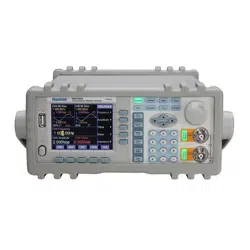Loading ...
Loading ...
Loading ...

Chapter 2 Principle of the Function Generator
In order to help you better understand the internal operation of the instrument, this chapter describes the basic
signal generator concepts and provides the specific details on the internal operations of the function generator.
2.1 Principle Diagram
2.2 Principle of Direct Digital Synthesis
In order to generate a voltage signal, the traditional analog signal source generally uses the discrete electronic
components to build oscillation circuitries in variety ways. The accuracy of frequency is not only low but also
very unstable. The production and testing procedures are very complicated and time-consuming. Moreover, it is
not convenient for the frequency setting and computer programming. The Direct Digital Synthesis (DDS)
technology is a new signal-generation technique. DDS does not consist of any oscillating components. It applies a
stream of digital data which represents the desired waveform pre-stored in memory to the input of
digital-to-analog converter (DAC). The DAC converts the data and outputs a series of voltage steps approximating
the desired waveform.
For example, to synthesize a sine waveform, first, the function y = sin(x) is digitized, then the digitized value y is
sequentially stored in the waveform memory by the address of x. DDS uses the phase accumulating technique to
control the address of the waveform memory. In every single sampling period, a phase increment is added to the
current content of the phase accumulator. The output frequency of DDS can be modified by changing this phase
increment. The digitized waveform data is read from the waveform memory addressed by the phase accumulator
- 8 -
Loading ...
Loading ...
Loading ...
